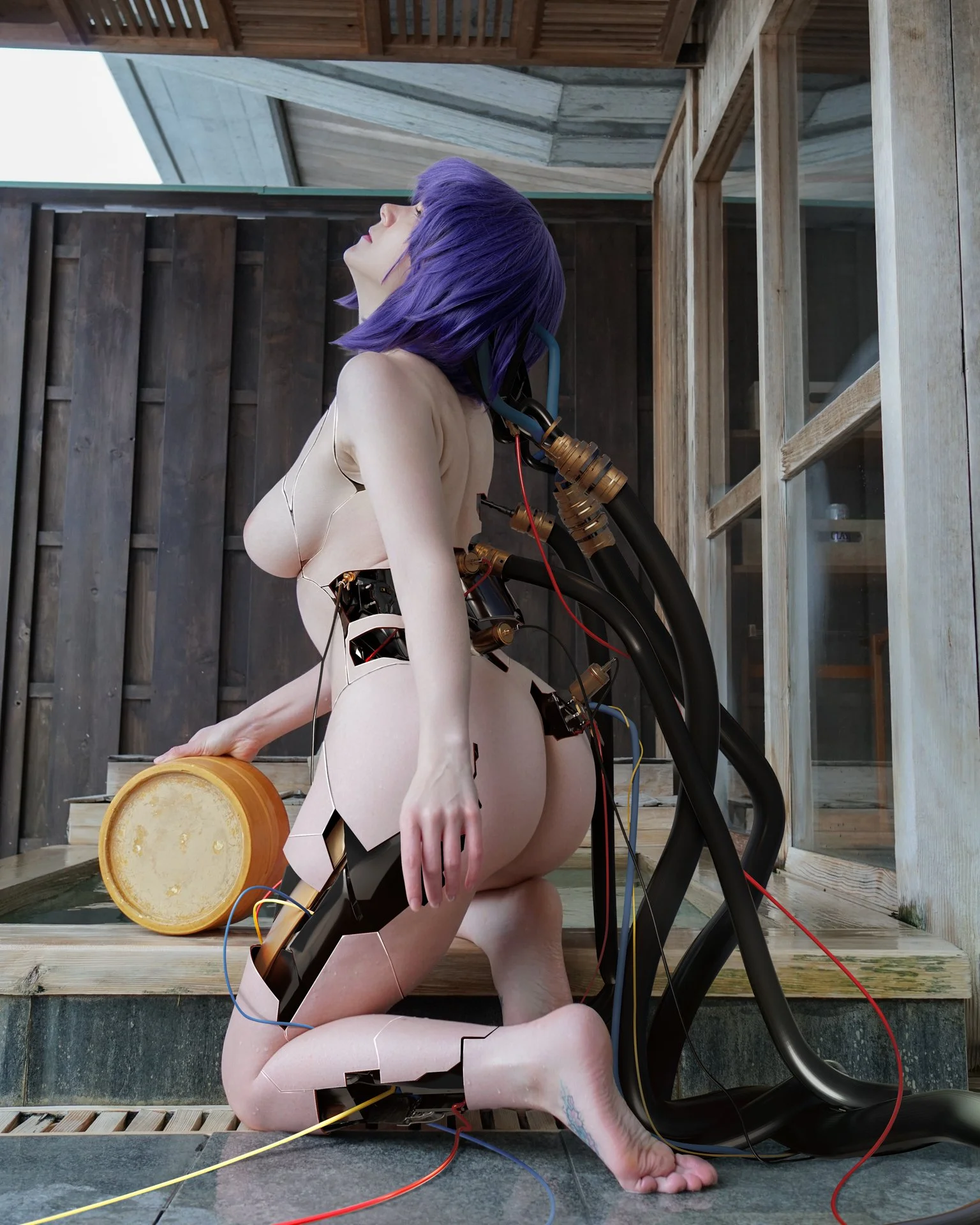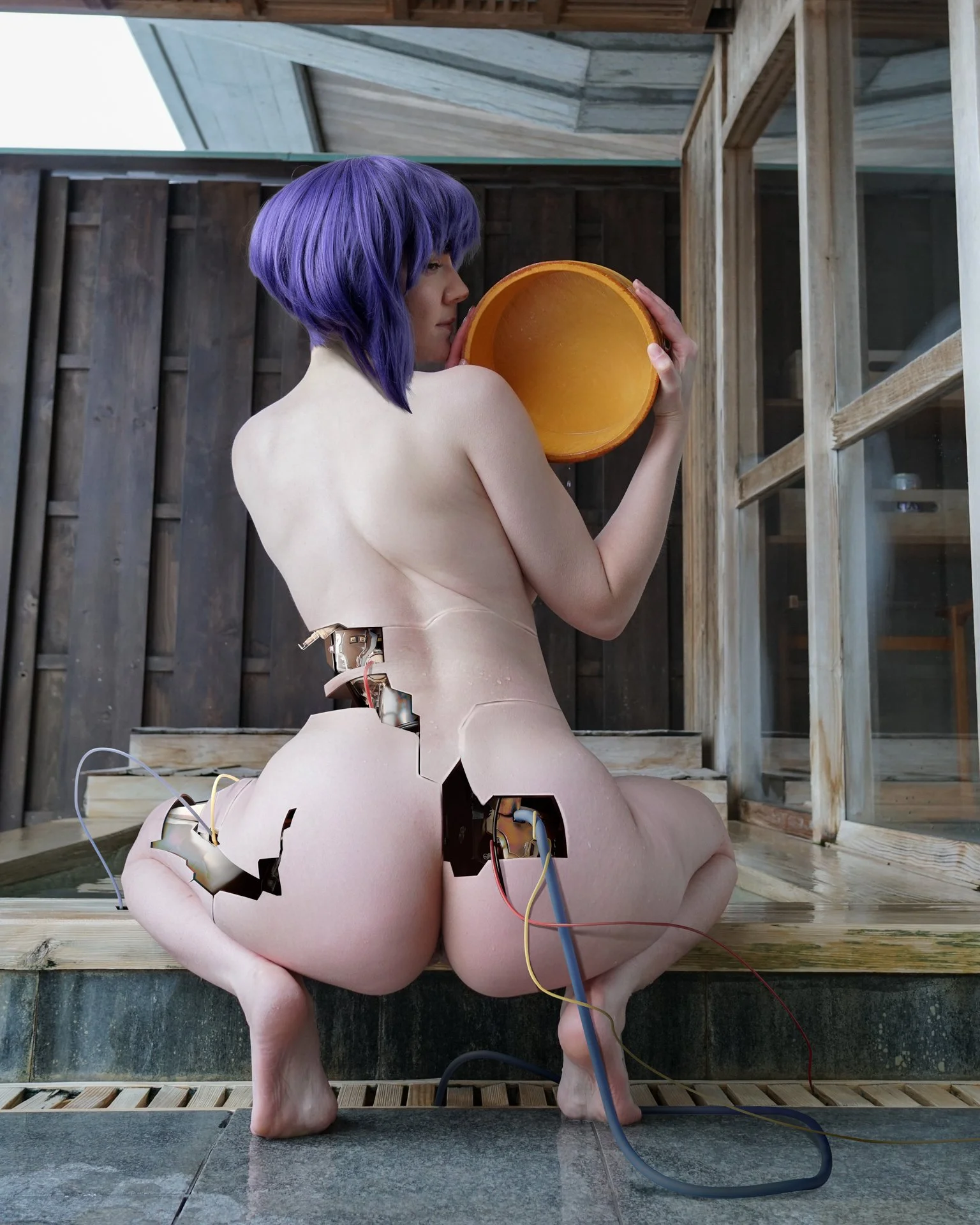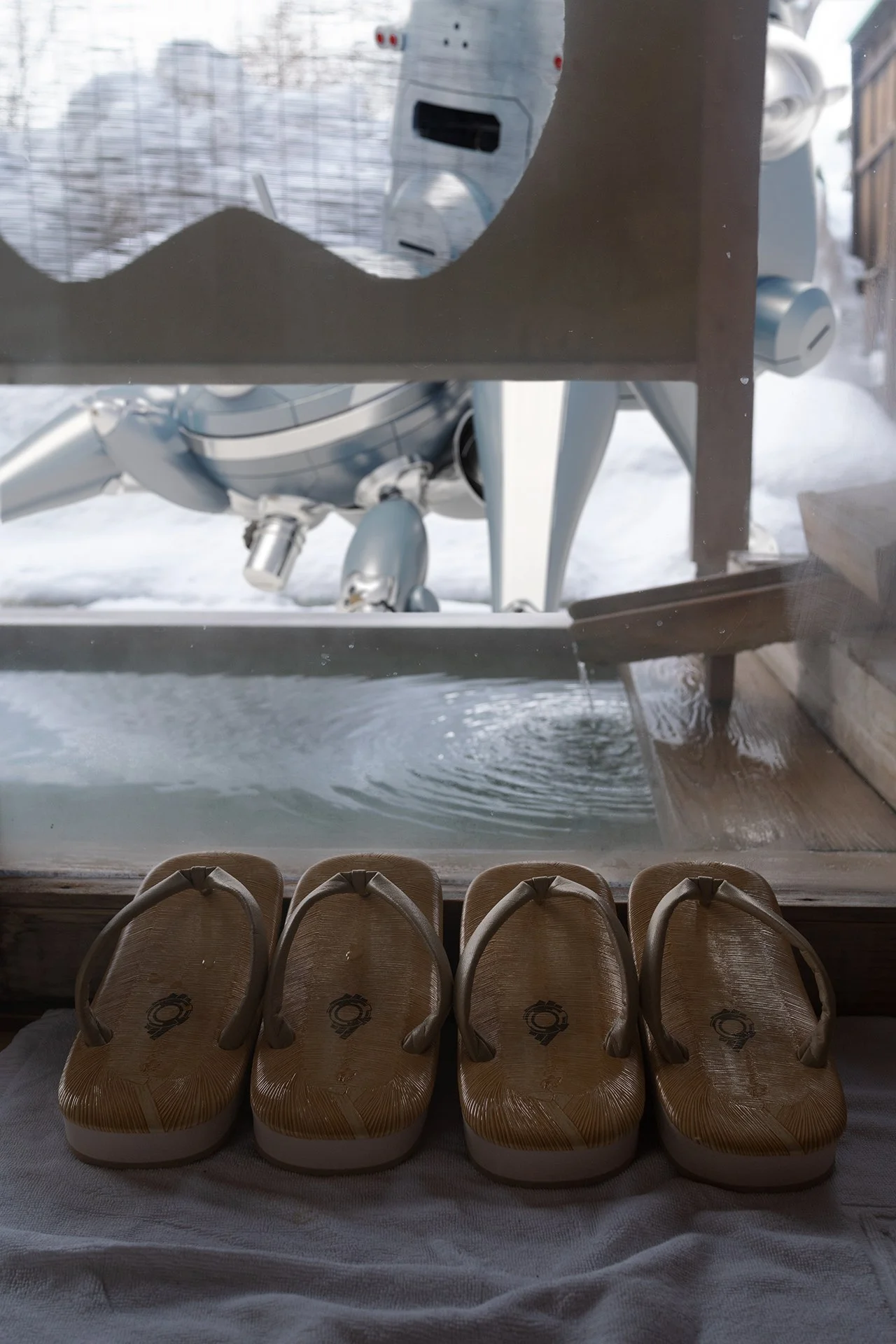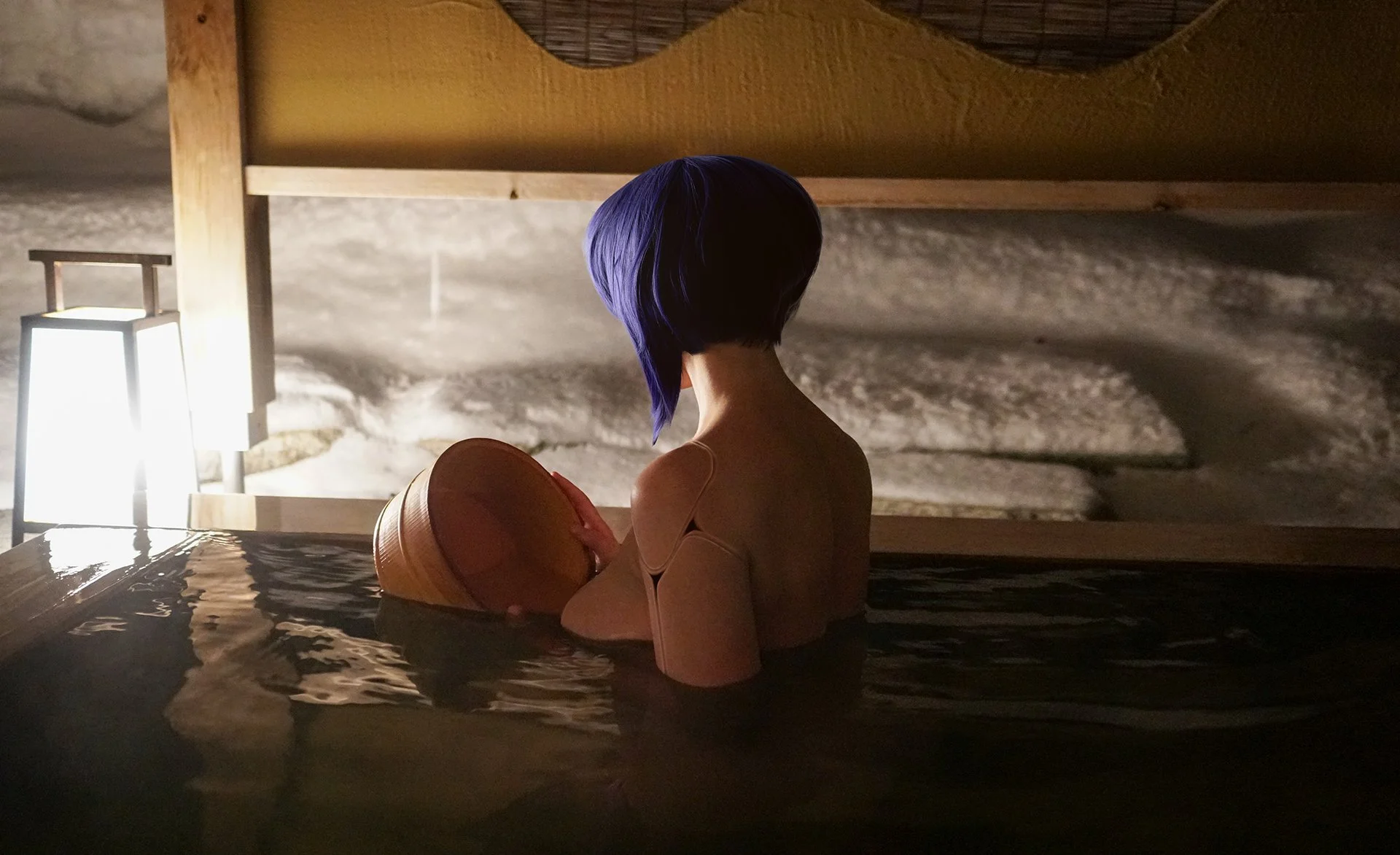Motoko Kusanagi: Futuristic Onsen Cosplay & Remote Photography Tips
So, I recently did a remote photo shoot with my friend Kayz0rbeam. Our goal was to do a shoot inspired by the series “Ghost in the Shell” where she was modeling as Motoko Kusanagi. The only problem was, she was visiting Japan while I was still at home. Not knowing when we’d get the chance to shoot together again or even be there in person, we didn’t want to miss this opportunity. In this post, I talk about our experience and share some helpful tips to use during your own remote photoshoot.
As you can tell from the cover, these shots are NSFW so if it’s not your thing, don’t worry because I plan to do another remote photoshoot as well as share some tips again. Hopefully, you may still enjoy the set and come away with some tips as well. Glad to have you, let’s begin.
We wanted to nail our location and to find a perfect fit for what we had in mind. Since our topic was Ghost in the Shell, we wanted our overall theme to be a blend of traditional Japanese aesthetics with futuristic cyberpunk.
So after some brainstorming, we ended up shooting at a Ryokan somewhere in Hokkaido. The benefit of this was getting a whole room and onsen to shoot in which would normally be impossible at a public onsen.
My goal was to transform her body into a robotic one via Photoshop. I’d also add cyberpunk features into the photo, such as droids, wires, and of course a Tachikoma that I made using 3D modeling.
Tip: Prepare and organize your ideas ahead of time!
To prepare for the photoshoot, we gathered a number of poses, props, equipment, and goal shots ahead of time. You really want to avoid doing this the day of, or during the shoot. The more organized you are, the smoother remote shoots will work out. I’m sure you’ve been in a situation where, for one reason or another, you’re shooting someone during the spur of the moment, sometimes leading to awkward situations. Now imagine doing this remotely.
Even if both the photographer and model have lots of time to spare, you’d still want to avoid wasting it. On top of that, it can be incredibly difficult to direct and pose someone remotely.
Tip: Select Visual References
For me, something that helps are visual references. Pick out poses via examples and plan this out with the model in advance. In our case, we picked some photos and put them on google slides for our model to look at while shooting.
In our case, we wanted to mimic some of the aspects of the Iconic Motoko poster and imagery of her plugged into many cables. So of course, I supplied many references so we could nail the shot.
The only things we needed were a camera, phone, and tripod.
The camera is obvious. Phones can be used to take photos, too. In our case, we used the phone to communicate during the shoot. Lastly, the tripod was integral to capturing sharp, steady shots without an extra pair of hands physically being there.
Tip: Communication is key!
During the set, we made sure to stay in contact. This sounds like a very obvious step, but it should be stated. This is important because you can make on-the-fly corrections and alterations to the photo, posing, framing etc. The model may not understand the ins and outs of photography to the same degree as the photographer. So, you want to be able to communicate and be updated with each shot along the way.
Depending on the type of person you’re working with, it may help to chat more than usual. Small aspects like this may help the person feel like they’re actually interacting with someone, guiding and giving directions. It’s not a stream with one viewer, it’s teamwork!
Some things we looked at during our set.
Framing
Lighting
Posing
Shadows
Condition of the model & break time
I snuck in an easter egg here
Tip: Factor in Time
Remote shooting comes with its own set of hurdles. One major one being time. She was in Japan, and I was in the States. Our time zones couldn’t be any more apart (about 13 hours,) which means that one of us would be losing sleep. You’ll always want your model to be at 100% so, spoiler alert, the photographer will have to become a night owl. Lucky for me, I’m usually up late editing anyway. Schedule what you feel is most important and tackle those shots first. It’s important to respect your model’s time. If you can’t get to everything planned, then it is what it is.
For our shoot, another aspect that came up was the amount of natural light. Since we didn’t have our own artificial lighting with us, the quality of the photos started to dip the longer the day went on. This meant we had to shoot the following morning. While this used more time, we were able to use the first set of shots as some sort of trial and error system.
As a compositor, I did my best to use the change in lighting to my advantage. Because it was darker out, I was able to turn on the light from the Tachikoma. Adding shadows also helped make everything feel more “real.”
Luckily, some of the shots we took that night, even with some noise, worked just fine. With that said, the quality of the day photos were…night and day from the dark ones. (Okay, sorry I’ll see myself out for that one.)
Tip: Send test shots during the middle of the shoot
It sounds weird but trust me, this will be a life saver. There are many times when a photo looks fine from a view finder, but once pulled up onto a bigger screen, you’ll start to notice many unfavorable aspects of the shot. These issues should be ironed out as soon as possible. Failure to do this may result in an entire photoshoot being ruined. Things to look out for:
Out of focus shots
Exposure too high or too low, resulting in unrecoverable photos.
Noise
Format of the image type, such as JPG, RAW
Composition
Tip: Patience
Lastly, the person using the camera may not be familiar with it. Chances are, they aren’t a photographer, so if they mess up a bunch, it’s okay. Be patient and encouraging.
If you followed the other tips, hopefully things will work out. Take your time and walk them through it. Don’t get frustrated if you don't get your dream shot. Many times, you’ll find some gems anyway. And as cliché as this sounds, have fun with it. This challenge can be an enjoyable experience in itself.
















